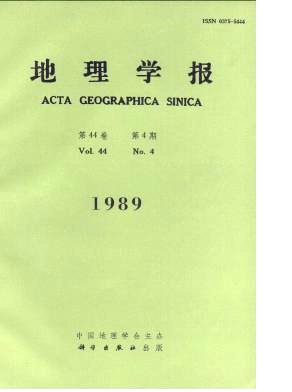Yin Guokang, Chen Qinluan
On the basis of extensive field investigation, the paper incorporates and analyses over 4000 observation data including 21 variables in 1954- 1982, which come from 58 small watersheds with basin area from 0.193km2 to 329km2 located in three pro-vinces (Figure 1.). A few findings are obtained:1. An effect of runoff and its rate on sediment yield is much more obvious than that of rainfall and its intensity. Analysis indicates that the relation between mo-ludus of total volume of runoff Mw (m3/km2) and that of sediment yield Ms(m3/ km2) during a single flood may be expressed as Ms~Mw1.5 and that the relation between modulus of total volume of runoff during all of annual flood series producing sediment and that of annual sediment yield Msa(m3/km2) may also be expressed as Msa~Mwa1.5Considering runoff rate, i. e. the modulus of peak discharge during a minute Mq (m3/km2) and the annual mean modulus of peak discharge during a minute for each of annual flood series Mq(m3/km2), the relations between modulus of sediment yield Ms, Msa and the composite factors (Mw + Mq), (Mwa + Mq) may respectively be expressed as Ms~(Mw+Mq)1.5 Msa~(Mwa+Mq)1.5 And they all have better correlation coefficients.2. Characteristic factors of watersheds surface influencing sediment yield are mainly relief ratio Rh, ruggedness number Dh, basin elongation Re, regulation range (including the amount of vegetative cover) Rp and resistance of ground layer to erosion and permeability Rs. With the observation data from 58 of small catchmentbasins of loess region in China (Table 4.), two regression equations can therefore be derived, in which Msa/Mwa1.5=0.26772Rh0.586*Re-0.560*Dh-1.418*Rp-0.703*Rs-3.864
Msa/Mwa=16.6188Rh0.548*Re-0.486*Dh-0.719*Rp-0.809*Rs-4.509
3. In view of the fact that basin elongation Re is directly related to relief ratio of catchment basin Rh, the variable Re may therefore be omitted. And the exponent values in regression equations can suitably be modified. Thus, a composite index of basin surface characteristics is given as follows:I=Rh0.6*Dh0.2*Rp-0.8*Rs-3.5
In order for both sides of equation to be nondimensional number, and from the data of 58 small catchment basins shown in table 4, an equation may be expressed as follows:Msa/Mwa=31.82910.83
It is, in effect, a model of sediment yield, which represents the general relationship among the regime of runoff, basin surface characteristics and sediment yield. It is possible that as quantitative basis classifying erosion regions and as a model predicting sediment yield in small watershed with macroscopic approach, it can be employed.4. From Figure 4 it may roughly be seen that the composite index I values of surface characteristics for various basins with different erosion intensity can be given as follows:
I value‰ Erosion intensity
>20 Very high
4-2 0 High
1-4 Medium
0.5一1 Low
<0.5 Very low

 [ab]x1+[bb]x2+…+[bt]xm=[by]
[
[ab]x1+[bb]x2+…+[bt]xm=[by]
[ ,they are the coeffcients related to heavy minerals or clay minerals, By which the converging percentage of each of the supplying regions is calculated. The result of calculation shows that over 92.1% of silt and fine sand, 94.6% of clay sediment, come from the Yangtze River. The research shows that most sediments are deposited in the Yangtze River Estuary, the remainder to be transported to the southeast. As the converging percentage of the Yangtze River upstream (x1) is known and the total amount of sediment supply from Datong Station is also known (475.00 million tons per year), the amount of sediment at the Yangtze River Estuary is computed, which is 460.50 million tons per year. This numerical value agrees quite well with the value of 460.10 million tons per year by comparing with the topographic map of the Yangtze River Estuary in 1915 and in 1963.
,they are the coeffcients related to heavy minerals or clay minerals, By which the converging percentage of each of the supplying regions is calculated. The result of calculation shows that over 92.1% of silt and fine sand, 94.6% of clay sediment, come from the Yangtze River. The research shows that most sediments are deposited in the Yangtze River Estuary, the remainder to be transported to the southeast. As the converging percentage of the Yangtze River upstream (x1) is known and the total amount of sediment supply from Datong Station is also known (475.00 million tons per year), the amount of sediment at the Yangtze River Estuary is computed, which is 460.50 million tons per year. This numerical value agrees quite well with the value of 460.10 million tons per year by comparing with the topographic map of the Yangtze River Estuary in 1915 and in 1963.